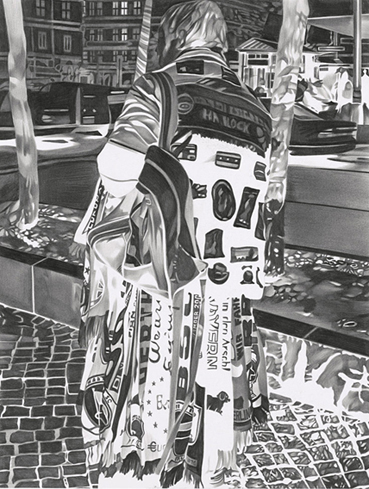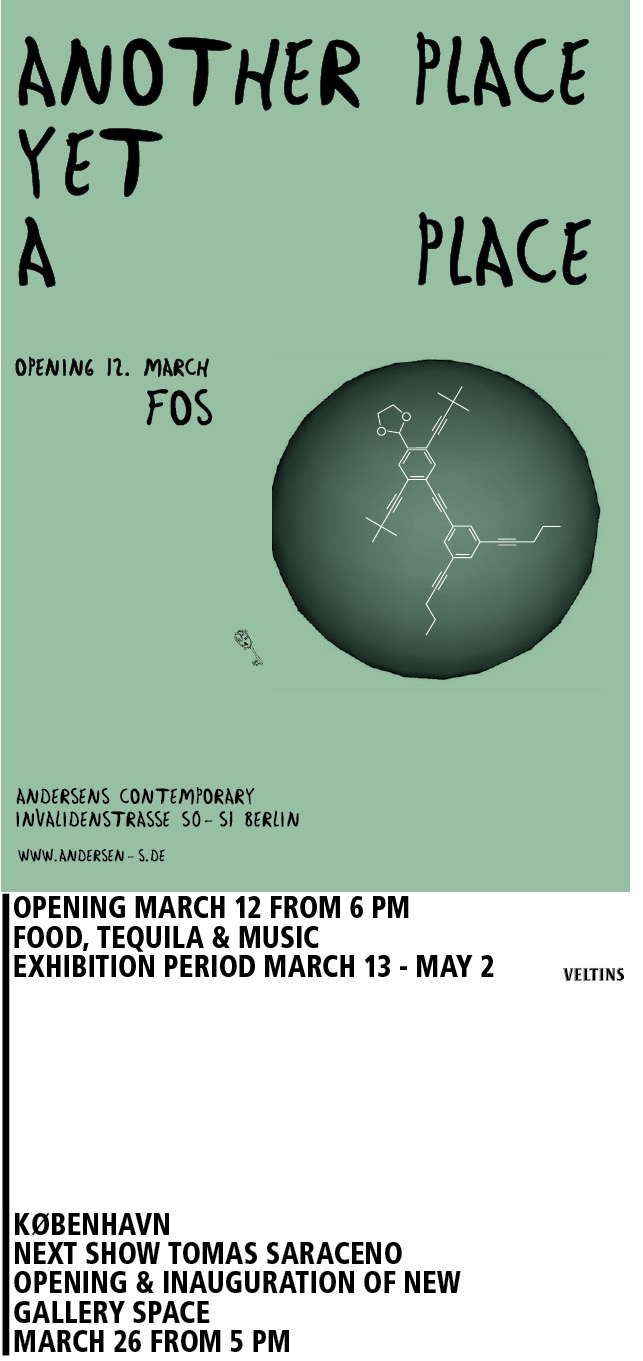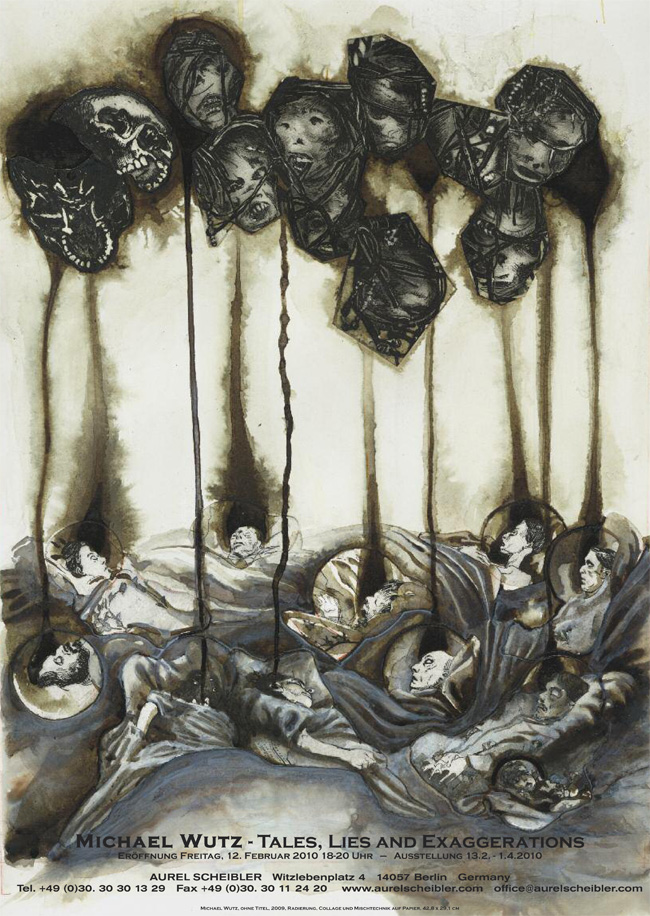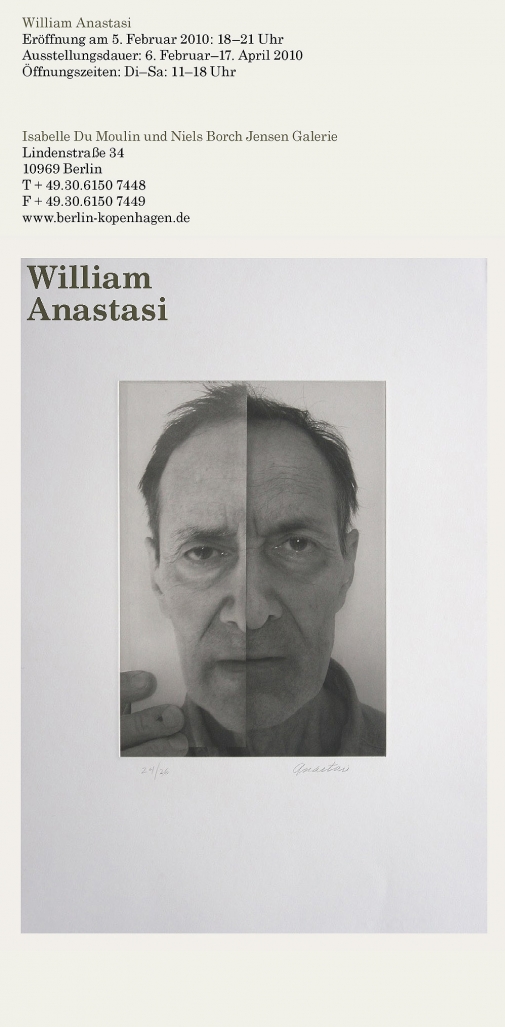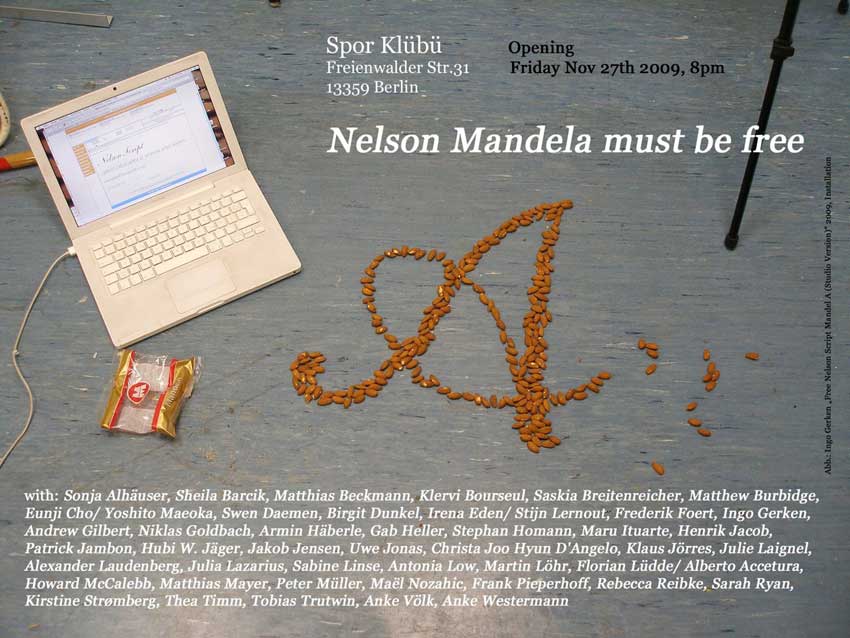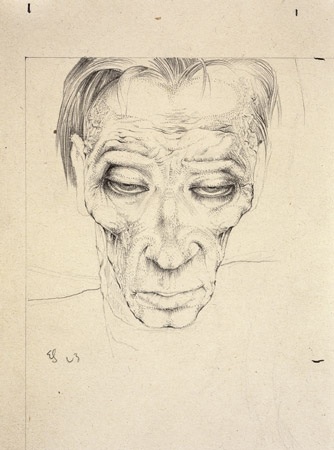
Tag: Berlin
MARC BRANDENBURG
Fos in Berlin
Michael Wutz @ Aurel Scheibler
JONAS DAHLBERG
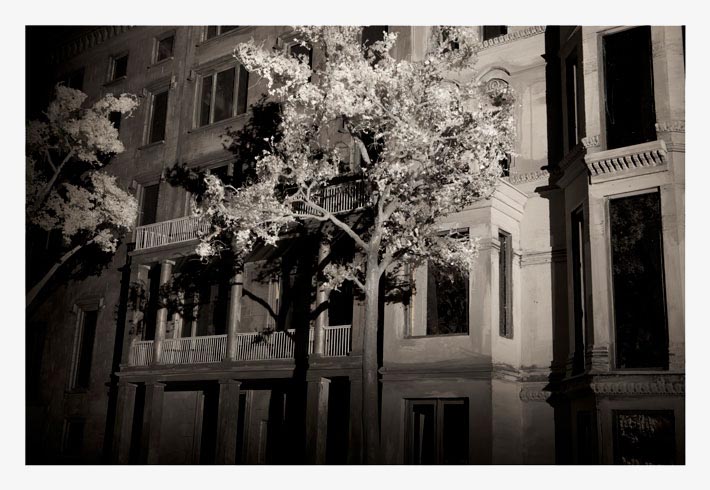
JONAS DAHLBERG
Galerie Nordenhake is pleased to announce Jonas Dahlberg’s second solo exhibition in Berlin. Here, the Stockholm based artist presents two recent video installations: “Three Rooms” (2008), View Through a Park, and his related photographic suite “View from a Street” (both 2009), along with his work from 1996-2003, “Safe Zones #1”. His works explore relationships between architectural and psychological space.
The artist is not interested so much in architecture in terms of rooms/enclosures but more as journeys, navigations, negotiations. “Three Rooms” is a 3-channel monitor presentation, depicting three rooms in a home: bedroom, living room and dining room. Over the course of 27 minutes all the objects and furniture dissolve, leaving an empty, lit room with no defining features. Dahlberg has found a way to eliminate objects that is slow and resembles a natural, organic process. The 3 screens work with a narrative structure more closely connected to architecture than film. The viewer moves from screen to screen as moving through rooms in a building.
In “View Through a Park” the viewer follows a single camera movement from the interior of one apartment, through an idyllic city park, to its facing apartment. Set at night, the dreamlike shot travels endlessly between these two buildings, transforming from a non-physical journey for the viewer through the park, to a furtive, intruding gaze within the private spaces. The photographic works suggest a surreptitious inventory and indexing of the exterior buildings. While the film is dreamlike, the photographs, taken at street-level, are grounded and factual. “View from a Street” returns to other themes recurrent in Dahlberg’s work – surveillance and voyeurism.
“Safe Zone’s #1” offers a dialog with these recent works by investigating themes such as the gaze, control and paranoia.
Jonas Dahlberg was born in Uddevalla, Sweden, in 1970, and currently lives and works in Stockholm. He has exhibited widely in many prestigious contexts. Selected solo exhibitions include: Galeria Foksal, Warsaw (2008), Neue Kunsthalle St. Gallen (with Jan Mancuska) and Frac Bourgogne, Dijon (2006), Moderna Museet in Stockholm and Bonner Kunstverein. Bonn (with Jan Mancuska) (2005) and Kunstverein Langenhagen (2003). He participated in numerous group exhibitions at Kunsthalle Wien and Kunstmuseum Stuttgart (2008), Leeum Samsung Museum of Art, Seoul (2007), Santa Barbara Museum of Art, Taipei Biennial, Calle Alcala 31, Madrid Spain (2006). He represented Sweden at the 26th Bienal de São Paulo and has participated in the Busan Biennial in 2004, the 50th Venice Biennial in 2003 and Manifesta 4 in 2002.
William Anastasi
Portraits of Graffiti writers
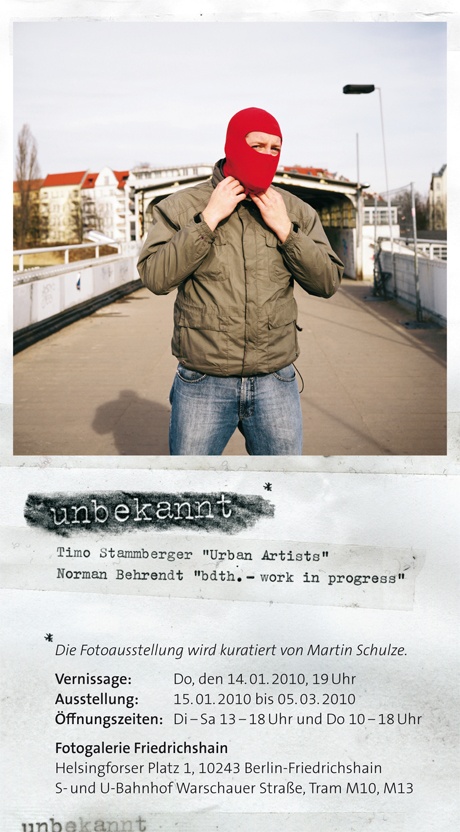
We are happy to present “Unbekannt“, an exhibition showing works of the photographers Timo Stammberger and Norman Behrendt at the non-commercial art space Fotogalerie Friedrichshain.
“Graffiti writers and other urban artists who work in public space, significantly influence the appearance of many cities and especially that of Berlin. In the exhibition “Unbekannt” (”Unknown”) the two Berlin based photographers Norman Behrendt and Timo Stammberger show portraits of some protagonists of these often difficult to access scenes. These people are often not perceived as artists, pursued by the police, and receive recognition only within their scene. But why do they follow an enormous pressure to perform, oppose the rules, and invest their money, time and energy into their art, with the risk of getting arrested? In “Unbekannt” the displayed artists are neither glorified nor condemned. Rather, Behrendt and Stammberger show intimate view of those, whose image is often distorted by the media.”
Mathieu Matégot
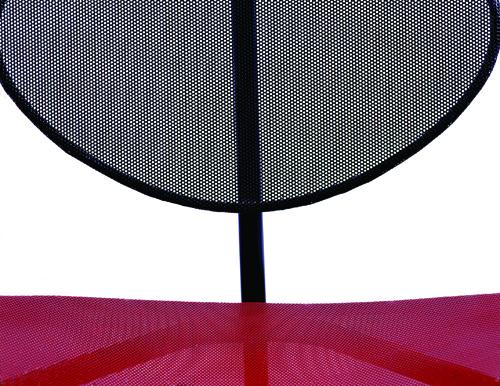
Mathieu Matégot
Johann König, Berlin is proud to present a selection of pieces by Mathieu Matégot. The exhibition takes place during the gallery exchange Berlin-Paris and results from the collaboration with jousse entreprise, Paris.
Mathieu Matégot is undoubtedly a forerunner of contemporary design. His involvement in innovative techniques and original forms makes him one of the more special figures of the 1950s, stamping his imprimatur on French style in that fertile post-war period.
In the 1940s, and quite off the cuff, he introduced the notion of creation and aestheticism into the making of humdrum objects, with a particular fondness for rattan and metal. He lent these objects a one-off form, which made them all identifiable. His brilliance lay in the fact that, before anyone else, and from 1945 onward, he used perforated sheet metal in a quite novel way. This was a material he had discovered during his captivity in Germany. By inventing a new technique, he created a new matter. First, he perforated the sheet metal in a conventional way with clover designs, then with small square and round holes. In 1952, he christened this pierced grid-like network, which was usually painted black, with the pretty and evocative name of “rigitulle”. He developed a machine that could bend, fold and fashion sheet metal like a piece of fabric, which, in turn, gave him a great deal of freedom of expression (cf. the “Java“, “Soumba“, “Bagdad“, “Satellite“ series, etc…). And his creativity did not stop with the way he used metal: he also made use of rattan, brass, Formica, glass (sometimes engraved), different species of wood, as well as fabric and leather, in an infinite number of variants.
For the other distinctive thing about Mathieu Matégot resides in the amazing production of small pieces of furniture and everyday objects, somewhat old-fashioned but always delightful, for which he managed to invent “modern” forms and lines (trays, wastepaper-baskets, magazine racks, glass holders, flower-pot holders, occasional tables etc..). These pieces were exhibited at major fairs and shows (Salon des Art Ménagers, Salon des Artistes Décorateurs, Arts de la Table), then distributed in editions of 200, on an exclusive basis, to decoration shops.
But it was in the most important models – lamps and lights, seating, tables – made for cata€logues and commissions, in very limited editions of 6-8 – that Mathieu Matégot’s talent really had free rein. Pieces with more finished structures, at once powerful and using curves, with clean, airy lines, among which we find the masterpieces which still act as references half a century later – like the three – legged “Nagasaki” chair, the “Copacabana” armchair with its curved metallic structure, and the “Santiago” armchair (with the seat and back made of parallel strips in perfo€rated sheet metal).
Born in 1910 in Hungary, but of French nationality, Mathieu Matégot was an officer of the Order of the Arts and Letters. He had started as a decorator of the theatre, but in 1939 he developed an interest in tapestry. In 1949 he designs numerous pieces of furniture in perforated metal. Matégot launches himself in a career as decorator and furniture designer. In the 60’s he accepted a post of professor of art at the prestigious l’Ecole des Beaux Arts at Nancy. Mathieu Matégot ended his life in February, 2001 at Angers, France. He was 90 years old.
Recommendation
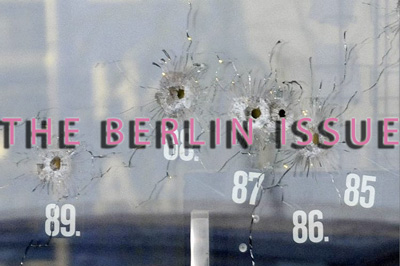
“Project spaces have a long tradition in Berlin.
Since 1993 I have experienced the restless changing process of Berlin’s cultural landscape.
Alongside the proliferation of commercial galleries in Berlin in the last five years, project spaces continue to be found throughout the city.
To me, this indicates that the city still has open desires. Open spaces and open desires.
Fortunately, the over-representation of the ”established order“ does not saturate the symbolic need and desire for experiencing art and theory as a common good, which opens up possibilities for new forms of sharing public and private space.
Berlin-based independent cultural workers, artists, curators and theoreticians seek to redistribute their cultural capital through the gesture of offering space to, and developing different formats for their colleagues and the public for the exchange and experience of art and theory processes.
Considering Berlin as a laboratory for cultural development for this online issue I launch Sharing the Potlatch, a discussion that will be continued in different formats about the role and reality of project spaces.
I invited following nine Berlin-based project spaces.“
